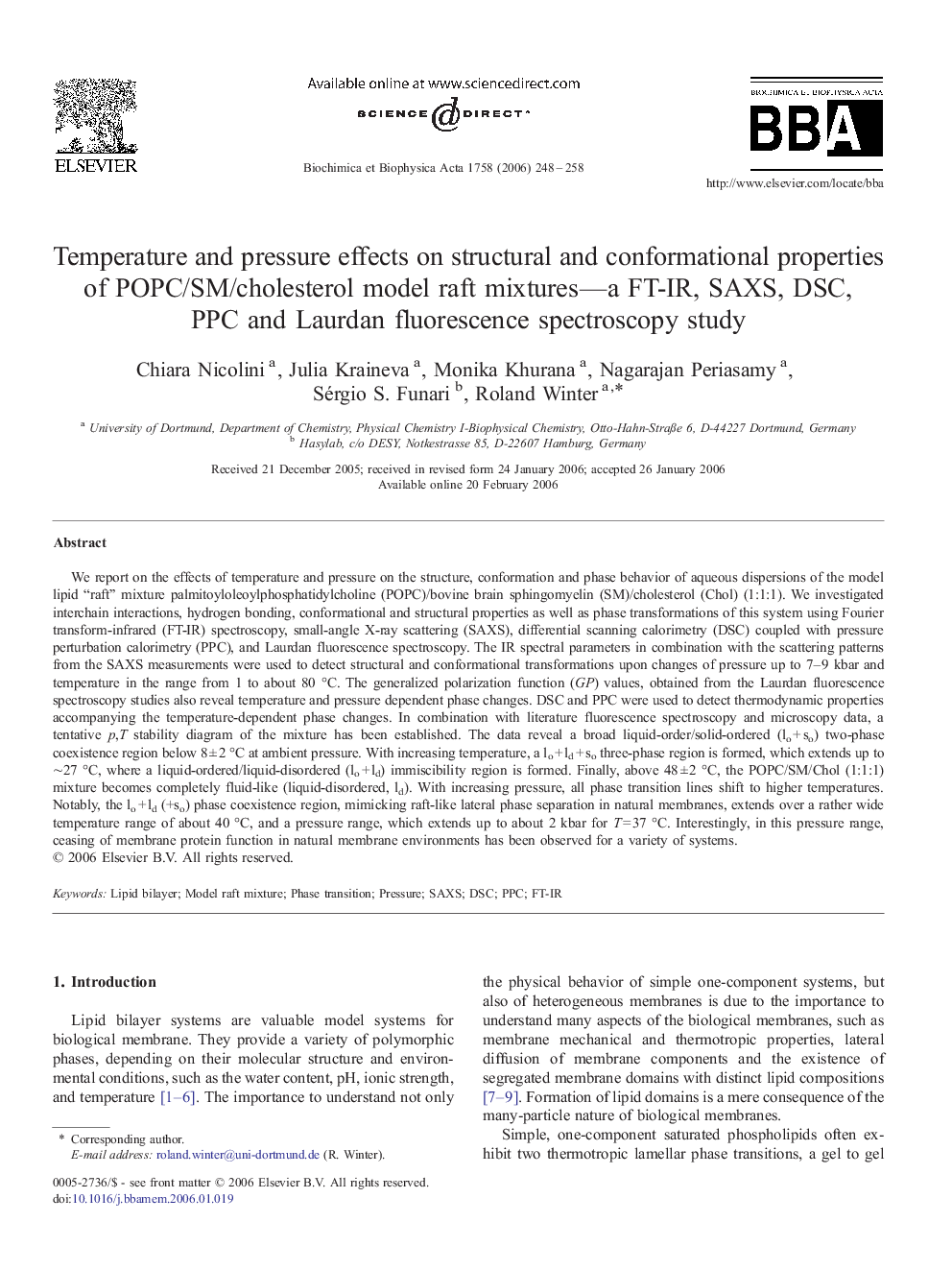| کد مقاله | کد نشریه | سال انتشار | مقاله انگلیسی | نسخه تمام متن |
|---|---|---|---|---|
| 1946188 | 1053292 | 2006 | 11 صفحه PDF | دانلود رایگان |

We report on the effects of temperature and pressure on the structure, conformation and phase behavior of aqueous dispersions of the model lipid “raft” mixture palmitoyloleoylphosphatidylcholine (POPC)/bovine brain sphingomyelin (SM)/cholesterol (Chol) (1:1:1). We investigated interchain interactions, hydrogen bonding, conformational and structural properties as well as phase transformations of this system using Fourier transform-infrared (FT-IR) spectroscopy, small-angle X-ray scattering (SAXS), differential scanning calorimetry (DSC) coupled with pressure perturbation calorimetry (PPC), and Laurdan fluorescence spectroscopy. The IR spectral parameters in combination with the scattering patterns from the SAXS measurements were used to detect structural and conformational transformations upon changes of pressure up to 7–9 kbar and temperature in the range from 1 to about 80 °C. The generalized polarization function (GP) values, obtained from the Laurdan fluorescence spectroscopy studies also reveal temperature and pressure dependent phase changes. DSC and PPC were used to detect thermodynamic properties accompanying the temperature-dependent phase changes. In combination with literature fluorescence spectroscopy and microscopy data, a tentative p,T stability diagram of the mixture has been established. The data reveal a broad liquid-order/solid-ordered (lo + so) two-phase coexistence region below 8 ± 2 °C at ambient pressure. With increasing temperature, a lo + ld + so three-phase region is formed, which extends up to ∼27 °C, where a liquid-ordered/liquid-disordered (lo + ld) immiscibility region is formed. Finally, above 48 ± 2 °C, the POPC/SM/Chol (1:1:1) mixture becomes completely fluid-like (liquid-disordered, ld). With increasing pressure, all phase transition lines shift to higher temperatures. Notably, the lo + ld (+so) phase coexistence region, mimicking raft-like lateral phase separation in natural membranes, extends over a rather wide temperature range of about 40 °C, and a pressure range, which extends up to about 2 kbar for T = 37 °C. Interestingly, in this pressure range, ceasing of membrane protein function in natural membrane environments has been observed for a variety of systems.
Journal: Biochimica et Biophysica Acta (BBA) - Biomembranes - Volume 1758, Issue 2, February 2006, Pages 248–258